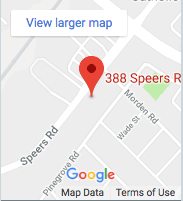For people age 60 and over, driving a car could be risky business. Most people over the age of 60 usually don’t have eyesight as good as it once was. Research proves that our ability to see moving objects while we ourselves are moving weakens much sooner than our ability to see stationary objects and reaction times are slower. Age-related eye diseases may also compromise our vision, even before we are aware of symptoms.
A few simple precautions can help to improve driving safety after age 60.
Be a Head Turner
People over the age of 60 may lose their peripheral vision. That’s why it’s important to turn your head to look both ways at intersections to make sure the way is clear before proceeding, especially when making a left-hand turn.
Night Time Troubles
Even if the eyeglasses you wear seem to work well, they may not be equipped to reduce glare and road signs may be hard to read. Avoid driving unfamiliar streets at night, especially those with poor lighting, irregular twists and poor signage.
Slow Down
As we age, our pupils get smaller and don’t dilate as quickly in the dark. Combined with other normal age-related changes, only about one-third as much surrounding light reaches the retina, as compared with the amount of light that reached your eye when you were 20. The loss of light transmittance can affect the reaction times of older drivers at night.
Self-Assessment
You can assess your driving ability based on the reactions of others. Honking horns, worried loved ones, police warnings and headlights that blind you, all suggest that you should rethink where and for how long you should drive.
It may be best to limit yourself to shorter trips during the day and when weather conditions are good.
Maintaining a Good Driving Record
To help you keep your good driving record…
- Have an annual eye exam to be sure your eyes don’t show any serious age-related changes. You may need to have your eyeglass or contact lens prescription updated more frequently.
- Consider wearing eyeglasses with anti-reflective coatings that can cut down on glare. Lenses with wavefront diagnostic technology may also be able to reduce glare, as well as halos, starbursts and other problems.
- If you go in for cataract surgery, consider the implantation of an aspheric intraocular lens that may provide sharper vision and better contrast sensitivity than a traditional spherical intraocular lens.
- If you have diabetes, be sure to have your eyes checked as regularly as your eye doctor advises and always follow a doctor’s recommendations regarding diet, medications and lifestyle to reduce the risk of severe vision loss through diabetic retinopathy.


